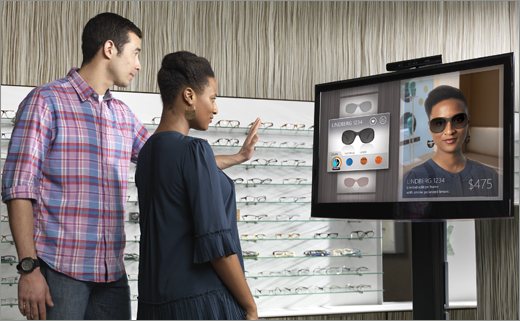Kinect for Windows Receives Significant Update
It's the biggest update to Kinect for Windows SDK since its original release.
The Kinect for Windows blog was updated with news of a new SDK launched on Monday. It's billed as "the most significant" update since the launch of the first version just over a year ago, offering Kinect Interactions, Kinect Fusion, an enhanced developers toolkit, and additional developer resources.
Bob Heddle, Director of Kinect for Windows, explains that Kinect Interactions provides tools for businesses and developers to create intuitive, smooth, and polished applications that are ergonomic and intelligently based on the way people naturally move and gesture. These interactions include push-to-press buttons, grip-to-pan capabilities, and support for smart ways to accommodate multiple users and two-person interactions.
As for Kinect Fusion, it creates accurate 3D renderings of people and objects by fusing together multiple snapshots from the sensor to create 3D models. The developer can actually grab the Kinect sensor and move it around the person or object to "paint" a 3D image in real-time. In turn, these images can be used to enhance real-world scenarios such as augmented reality, 3D printing and more.
In addition to those two features, the updated SDK adds OpenCV and MATLAB Samples, and Kinect for Windows Code Samples on CodePlex. The latter addition marks the first time that select Kinect for Windows code samples will be available through an open-source resource.
"[The new SDK is] fully compatible with all previous commercial releases, so we encourage everyone to upgrade to the new version," Heddle said. "As always, we are constantly evolving the technology and want to know what you think. The Kinect for Windows sensor, together with the SDK, can help you create engaging applications that take natural voice and gesture computing to the next level."
Kinect for Windows SDK 1.7 can be downloaded directly from Microsoft along with the developer toolkit and the new and improved Human Interface Guidelines (HIG).
Contact Us for News Tips, Corrections and Feedback
Get Tom's Hardware's best news and in-depth reviews, straight to your inbox.

Kevin Parrish has over a decade of experience as a writer, editor, and product tester. His work focused on computer hardware, networking equipment, smartphones, tablets, gaming consoles, and other internet-connected devices. His work has appeared in Tom's Hardware, Tom's Guide, Maximum PC, Digital Trends, Android Authority, How-To Geek, Lifewire, and others.
-
internetlad still not significant enough to get me to spend a bill on something that will almost certainly not be compatible with the new XBOX (If I even bother to get it, ever.)Reply -
s3anister internetladstill not significant enough to get me to spend a bill on something that will almost certainly not be compatible with the new XBOX (If I even bother to get it, ever.)This new SDK is really for the developers working on integrating Kinect into their software/hardware. If you're not doing that then this release would mean very little to you.Reply -
CaedenV internetladstill not significant enough to get me to spend a bill on something that will almost certainly not be compatible with the new XBOX (If I even bother to get it, ever.)Supposedly the new kinnect will be bundled with the new kinnect. This version is only for developers and commercial use.Reply
Still, that is the big question. If they bring xbox to the PC (as the nextbox is supposedly x86 running win8 it should not be hard to do) then they will require the xbox version of the kinnect for the PC. But if they don't bring xbox to the PC then I really want a leap motion sensor to use with win8. Either way I am not going to go out and get a touch screen for my PC and I would like SOMETHING to use as a touch replacement. -
beardguy I can see lots of potential here. No reason to buy one yet though, unless you're a developer working on Kinect enabled applications.Reply
In my office building lobby they have a touch-screen kiosk that shows the news/weather, a Kinect version would be MUCH better to avoid all those dirty fingerprints. -
back_by_demand spentshellsI still can not find a PC kinect even at what should be reputable dealers locallyYou use the Xbox Kinect, there is no separate PC Kinect (yet), and there's this thing called the interwebs you can supposedly buy things on???Reply -
back_by_demand internetladstill not significant enough to get me to spend a bill on something that will almost certainly not be compatible with the new XBOX (If I even bother to get it, ever.)If an SDK kit for Kinect for the PC was compatible with the Xbox I would be very impressedReply
